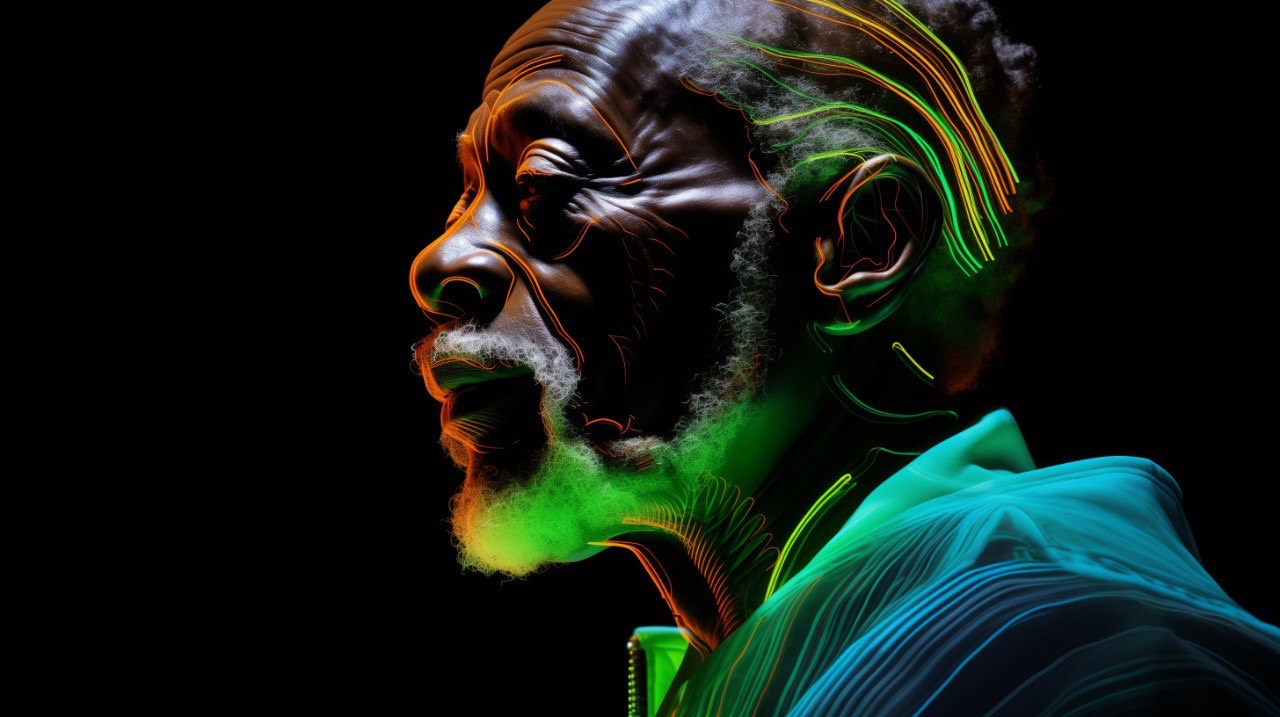Imagine this: you’re in a dark room, fumbling for your phone or maybe trying to avoid bumping into furniture. But wait—your body is glowing. No, not in a superhero kind of way, but yes, humans actually glow in the dark. Sounds wild, doesn’t it? But it’s true! Humans have a faint glow that we don’t see, and it’s not like the glowing effects we see in fireflies or jellyfish. It’s so subtle that it’s completely invisible to the naked eye.
So why do we glow? What’s the deal with this hidden human glow, and why can’t we see it? Let’s uncover the strange, yet fascinating truth about how humans glow in the dark, why we can’t notice it, and how this could potentially be useful in the future.
What is Bioluminescence in Humans?
First things first: bioluminescence. You’ve heard of fireflies and glow-in-the-dark jellyfish, right? Well, humans are part of the bioluminescent club too, but don’t expect us to light up the night sky. The glow we produce is a result of metabolic processes inside our cells. During regular cellular activity, the body creates reactive oxygen species (ROS), which interact with molecules in a way that produces light. It’s faint, it’s weak, but it’s real!
While bioluminescence is a phenomenon typically associated with certain animals and plants, it’s a natural process in humans as well. This barely perceptible glow doesn’t serve a huge purpose for us—no glowing neon signs over our heads to announce our presence—but it’s definitely happening.
Why Can’t We See the Glow?
Okay, here’s the kicker: we can’t see it. Our eyes just aren’t equipped to notice this kind of light. The glow we emit falls in the near-infrared spectrum, which is a type of light outside of the range that our eyes can detect. To give you a sense of scale, this glow is about 1,000 times weaker than the threshold needed for us to see it.
It’s like being in a completely dark room, knowing there’s light around you, but it’s so faint you can’t perceive it. While animals like certain fish can detect infrared light, humans are not biologically wired to see it. Essentially, your glow is just too faint to notice.
Where Does the Glow Come From in the Human Body?
Now, let’s get into the fun part: where exactly does this human glow come from? The areas with the highest metabolic activity, like your face, chest, and internal organs, are where the glow is most prominent. This makes sense since these are the parts of the body constantly at work—your brain is firing neurons, your heart is pumping, and your muscles are burning energy.
Interestingly, your glow might actually intensify when you’re more active or stressed. When your body uses more energy, it creates more reactive oxygen species, which means a little more glow. It’s not enough to light up a room, but it’s a cool, secret byproduct of the processes happening in your body all day long.
Why Do Humans Glow?
So here’s a question: why do humans glow? What’s the evolutionary reason for this faint, invisible light? Well, the truth is, we don’t have a clear answer. Unlike fireflies or some glowing sea creatures, humans don’t glow to attract mates or scare away predators. Instead, this glow is simply a byproduct of metabolic reactions. Think of it like your phone heating up after using it for a while—it’s a natural result of energy being used, but it doesn’t have any clear function.
Some scientists speculate that our ancient ancestors might have been able to detect this glow. Maybe, at some point in our evolutionary history, we used this light to communicate, or perhaps it played a role in survival. Over time, as we evolved, our ability to perceive this light seems to have faded. Today, this faint bioluminescence doesn’t help us in any noticeable way.
Could Humans Ever Use Their Glow?
Now for the fun part—could this invisible glow ever be useful? If we could somehow amplify the bioluminescence humans naturally produce, there might be some cool applications for it. Scientists are already exploring bioengineering bioluminescence in plants and microorganisms. In the future, we might even see humans harnessing their own glow for things like sustainable lighting or eco-friendly innovations.
Imagine a world where your body’s light is enough to navigate in the dark or charge your phone! It sounds like a science fiction fantasy, but researchers are working on making bioluminescence more practical and visible. So while we won’t be glowing brightly like a human flashlight anytime soon, there’s a tiny possibility that our invisible glow might become more useful as technology advances.
Is There a Way We Could See Our Glow?
If we could see the light we’re emitting, wouldn’t that be amazing? While it’s not a reality just yet, there is ongoing research into how we might be able to perceive our own glow in the future. Some scientists are looking into creating bioluminescent clothing or even tattoos that could allow us to see some form of bioluminescence. In a way, humans could eventually become their own light sources—without needing batteries or electricity.
However, even with all the exciting advancements in bioengineering, we’re still far from being able to see or amplify the light we produce naturally. For now, we’ll just have to enjoy the fact that, even though we can’t see it, we’re glowing in secret.
Could Bioluminescence Be the Future of Lighting?
If we can figure out how to make bioluminescence more visible, it could revolutionize how we think about lighting. The future might hold bioluminescent plants, glowing streets, and even self-illuminating buildings—powered by the same process that happens in our own bodies.
We’ve already seen glowing plants in labs, and researchers are working on integrating bioluminescence into other parts of everyday life. Could this mean that one day we might walk around in glowing clothes or have a glow-in-the-dark home? Who knows? As technology progresses, the possibilities could be endless.
The Bottom Line: You’re Glowing—But No One Can See It
So here’s the takeaway: humans are glowing. It’s faint, it’s secretive, and it’s happening all around us, but we can’t see it. This natural, invisible glow is just a small but fascinating quirk of our biology that we never even knew existed. While it’s not lighting up the world, it’s still a reminder of how incredible and mysterious the human body is.
Even if you can’t see your glow, you’re still a walking, glowing marvel. Maybe one day, we’ll unlock the potential of this hidden light and use it in ways we never thought possible. Until then, just know that you’re glowing, even if no one else can see it.










